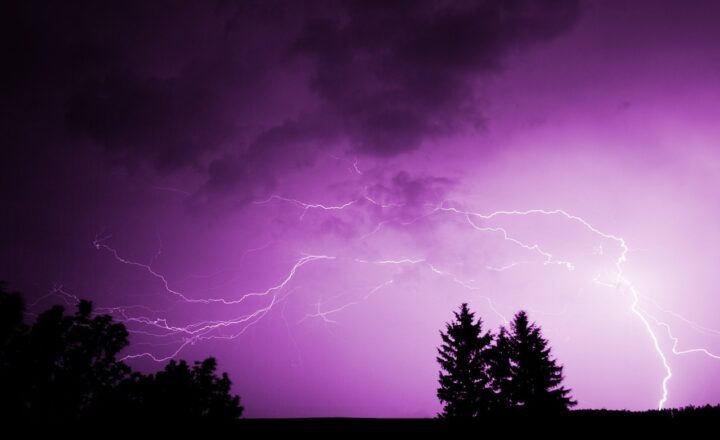How Nature’s Most Powerful Forces Created Stunning Landscapes Like Volcanoes, Canyons, and Fjords
November 17, 2024

Nature is a master sculptor, tirelessly shaping our planet’s surface through a myriad of powerful forces. From the explosive eruptions of volcanoes to the gradual yet monumental carving of canyons and the serene elegance of fjords, the landscapes we marvel at today are the result of processes that have taken place over millions of years. Each formation tells a story of the Earth’s history, revealing the dynamics that continue to influence our environment.
1. The Birth of Volcanoes: Fiery Earth and Spectacular Eruptions
Volcanoes are perhaps the most dramatic manifestations of geological processes. These mountains, often found at tectonic plate boundaries, result from the movement of molten rock (magma) from the Earth’s interior to its surface. When pressure builds up within the Earth’s crust, it can lead to an explosive volcanic eruption.
There are several types of volcanic eruptions:
- Effusive Eruptions: These occur when magma rises to the surface effortlessly, creating lava flows that can spread across large areas. Kilauea in Hawaii is a prime example, with its relatively gentle eruptions that produce vast lava fields.
- Explosive Eruptions: These are marked by violent bursts of gas and ash, leading to the creation of ash clouds and pyroclastic flows. Mount St. Helens in Washington State famously exhibited this behavior during its catastrophic eruption in 1980.
- Phreatomagmatic Eruptions: These occur when magma interacts explosively with water, leading to the creation of steam and violent eruptions. Such eruptions can create unique volcanic landforms and deposits.
The landscapes left behind by volcanic activity can be varied and breathtaking. Caldera lakes, lava tubes, and cinder cones are just a few features resulting from volcanic eruptions, creating environments that support unique ecosystems.
2. Canyons: Carved by Water’s Persistence
Canyons represent another stunning landscape shaped predominantly by water. Over millions of years, rivers cut through rock layers through a process called erosion. This is particularly evident in places like the Grand Canyon, where the Colorado River has sculpted a vast chasm that reveals nearly two billion years of geological history.
The mechanics of canyon formation include:
- Downcutting: When water flows over rock surfaces, it gradually wears them down. Over time, this can deepen and widen river channels, creating canyons. The rate of downcutting is influenced by factors such as water volume, sediment load, and the hardness of the rock.
- Lateral Erosion: Besides deepening the canyon, rivers also erode the sides, leading to wider canyons. This process often creates steep cliffs and terraced structures that showcase distinct layers of rock.
- Mass Wasting: The gradual collapse of rock and soil from canyon walls, often exacerbated by weathering and freeze-thaw cycles. This contributes further to the widening and shaping of the canyon’s structure.
Canyons can vary greatly in size and appearance, with some famed for their immense depth while others boast striking colors and rock formations, making them popular sites for hiking and tourism.
3. Fjords: Nature’s Glacial Masterpieces
Fjords are breathtaking landscapes formed by the movement of glaciers. These steep, narrow inlets, often filled with seawater, are typically found in regions once covered by ice sheets. The process of fjord formation is both unique and intricate:
- Glaciation: During ice ages, glaciers form from accumulated snow that compresses into ice. As these massive bodies of ice move, they carve out U-shaped valleys in the underlying rock, creating deep gouges in the landscape.
- Retreat of Glaciers: When the climate warms, glaciers melt and recede, leaving behind deep valleys that often fill with seawater, leading to the formation of fjords. Norway’s stunning fjords, such as Geirangerfjord, exemplify this process, with steep cliffs rising dramatically from the water’s edge.
- Post-Glacial Uplift: After a glacier melts, the land begins to rebound, causing the surrounding landscape to rise. This process can create unique topographical features around fjords and influence local ecosystems.
Fjords are not only breathtaking to behold but also provide critical habitats for diverse marine and terrestrial life, making them invaluable ecological zones.
4. Interconnectedness of Geological Forces
While we’ve explored the unique processes forming volcanoes, canyons, and fjords individually, it’s essential to recognize that these geological forces often interact. For example, volcanic eruptions can contribute to erosion processes in nearby river systems, altering how canyons evolve over time. Similarly, climate change impacts glacial retreat and can lead to increased sediment in waterways, influencing canyon formation.
Moreover, tectonic activities can trigger earthquakes, resulting in landslides and other erosional events that reshape existing landscapes, illustrating the complex interplay of nature’s forces.
5. Conclusion: The Ever-Changing Landscape of Earth
The stunning landscapes of volcanoes, canyons, and fjords serve as powerful reminders of Earth’s dynamic nature. Through the relentless interplay of heat, water, ice, and time, these features were formed through processes that continue to influence our planet today.
Understanding the geological history and ongoing activity of these landscapes enhances our appreciation for natural wonders and the delicate balance of ecosystems they support. As climate change continues to reshape our world, it becomes increasingly important for us to protect these breathtaking sites while learning from the natural processes that created them.
We invite you to explore these magnificent landscapes firsthand and witness the awe-inspiring forces that nature has sculpted over millennia. Whether hiking through a canyon, gazing at a volcanic peak, or cruising through a fjord, these experiences connect us to our planet’s past and remind us of the incredible power of nature.








